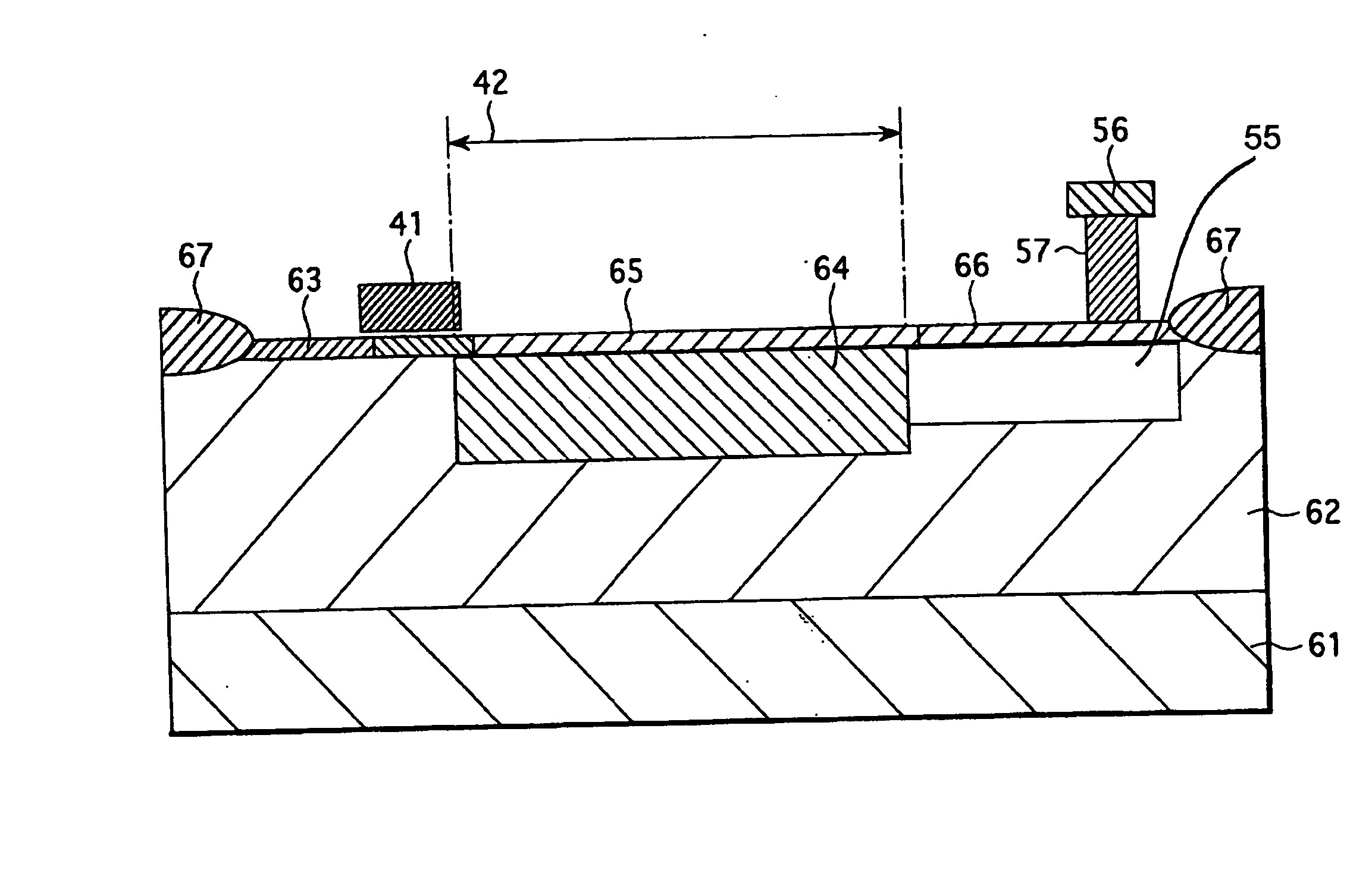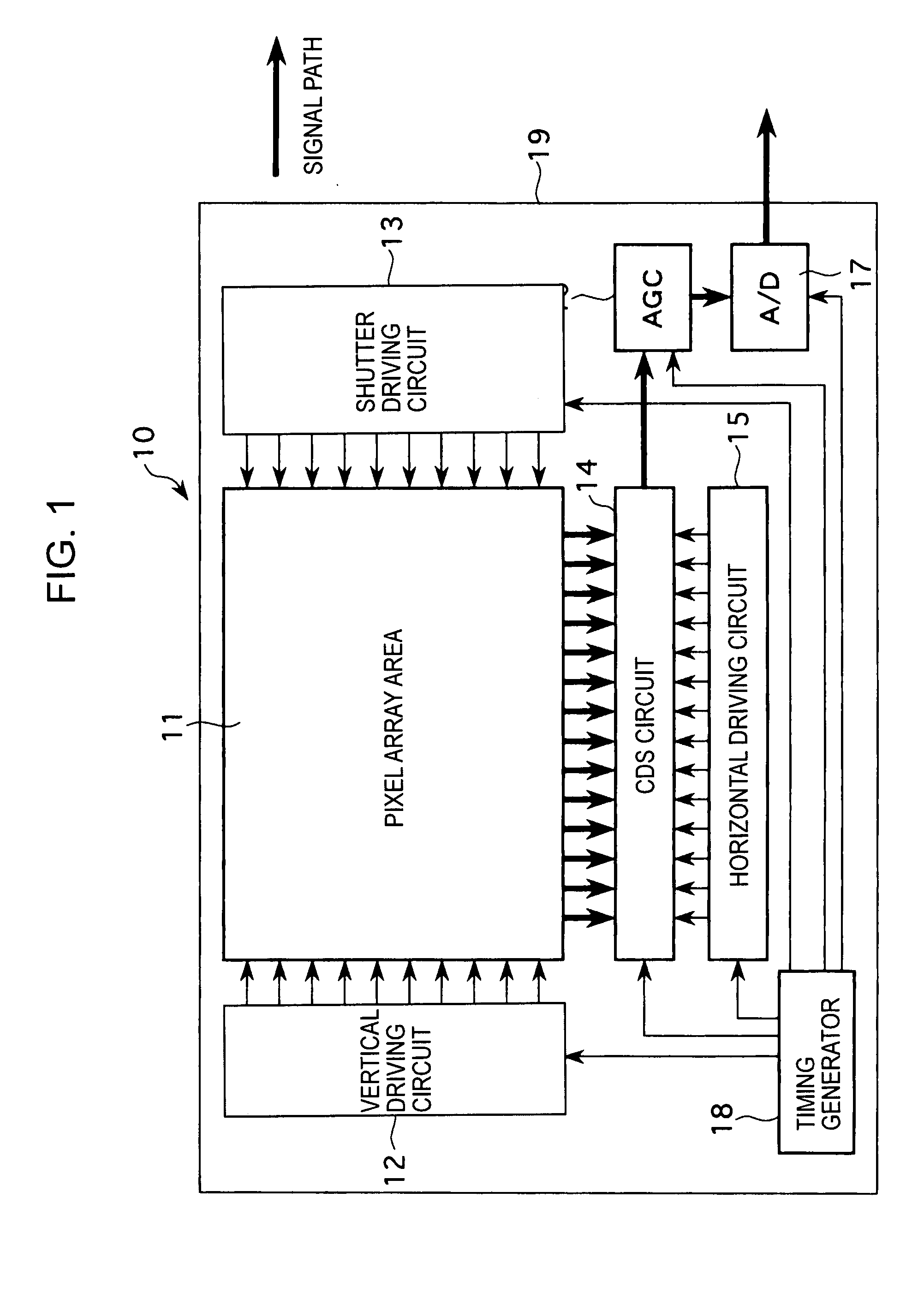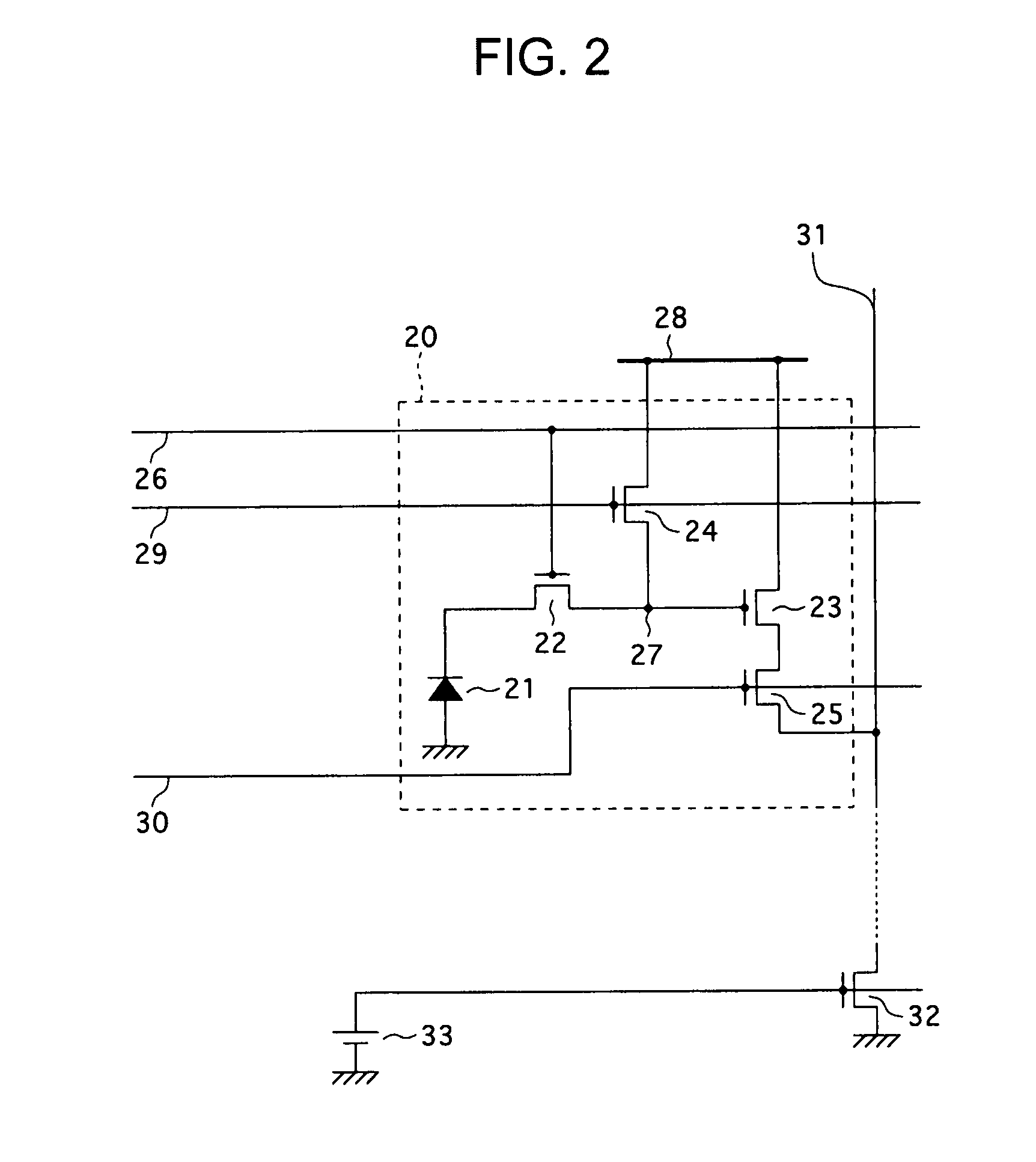Solid-state imaging device
a solid-state imaging and imaging device technology, applied in the direction of color television, television systems, radio control devices, etc., can solve the problem of difficult to fix the intermediate portion of the p-well at a ground potential, and achieve the effect of suppressing the shading of the output signal and minimizing the increase in the dimensions of the pixel
- Summary
- Abstract
- Description
- Claims
- Application Information
AI Technical Summary
Benefits of technology
Problems solved by technology
Method used
Image
Examples
first embodiment
[0052] According to a first embodiment of the present invention, in a solid-state imaging device, such as a CMOS image sensor having the arrangement shown in FIG. 1, by achieving well contact in an activation region of a photoelectric conversion portion for each pixel in the pixel array area 11, an increase in the dimensions of a unit pixel (the size of a pixel) is minimized and shading of an output signal due to a variation in the potential of a well is suppressed.
[0053]FIG. 3 is a plan pattern view showing a pixel structure according to the first embodiment. In FIG. 3, parts equivalent to those in FIG. 2 are represented by the same reference numerals.
[0054] Referring to FIG. 3, a gate electrode 41 is disposed between a photoelectric conversion region (activation region) 42 and an activation region 43 of the photoelectric conversion portion 21, and constitutes the transfer transistor 22. The activation region 43 is a drain region of the transfer transistor 22, a source region of ...
second embodiment
[0063] According to a second embodiment of the present invention, in a solid-state imaging device, such as a CMOS image sensor having the arrangement shown in FIG. 1, by achieving well contact for a plurality of adjoining pixels, instead of for each pixel, a reduction in the characteristics, more specifically, reductions in the saturation level and the sensitivity of the pixel can be suppressed. Specific examples will be described below.
first example
[0064]FIG. 5 is a plan view schematically showing the arrangement of a pixel array area 11A according to a first example of the second embodiment. Here, in order to simplify the drawing, the pixel array area 11A has a pixel arrangement of five rows and six columns.
[0065] As shown in FIG. 5, in the pixel array area 11A according to the first example, a plurality of adjoining pixels, for examples, four pixels, pixels 20A to 20D, constitute a unit cell 70A. A well contact part 71 is provided in the unit cell 70A for the pixels 20A to 20D without changing the size of each pixel. More specifically, rectangular corners, which are adjacent to each other, of the pixels 20A to 20D are evenly cut off, and the well contact part 71 is formed at the intermediate portion of the pixels 20A to 20D. Also, well potential fixing wires 72 each supplying a well potential to the well contact part 71 are arranged in every two columns (or every two rows), and are each electrically connected to the well co...
PUM
 Login to View More
Login to View More Abstract
Description
Claims
Application Information
 Login to View More
Login to View More - R&D
- Intellectual Property
- Life Sciences
- Materials
- Tech Scout
- Unparalleled Data Quality
- Higher Quality Content
- 60% Fewer Hallucinations
Browse by: Latest US Patents, China's latest patents, Technical Efficacy Thesaurus, Application Domain, Technology Topic, Popular Technical Reports.
© 2025 PatSnap. All rights reserved.Legal|Privacy policy|Modern Slavery Act Transparency Statement|Sitemap|About US| Contact US: help@patsnap.com



